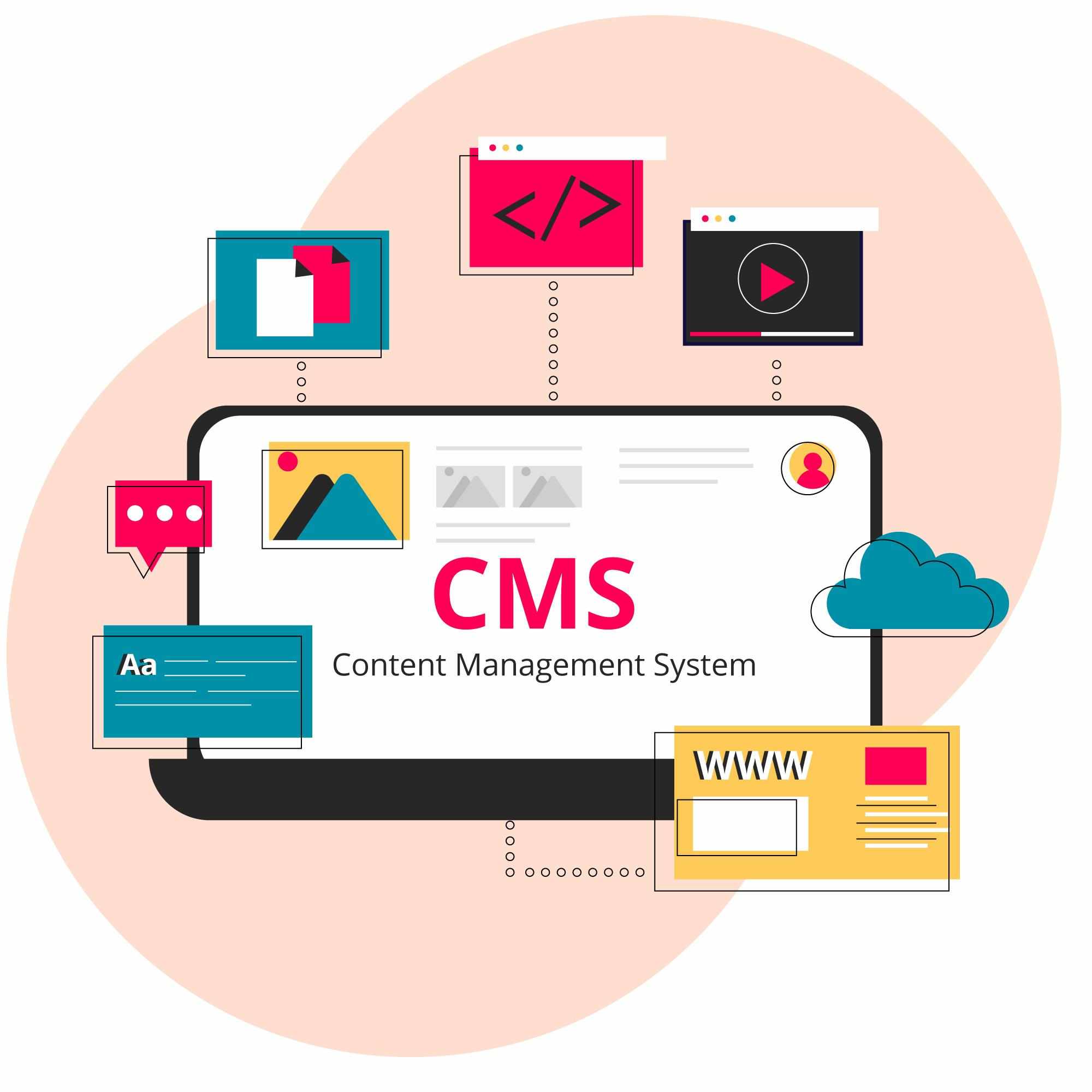FastCreaSite – The rapid expansion of online platforms has forced companies to reevaluate how they structure and distribute content. As organizations scale their digital presence across websites, mobile apps, and emerging smart devices, traditional systems often fail to support the growing operational demands. This shift in digital strategy has positioned Headless CMS solutions at the center of modern technical planning. With an architecture that separates content storage from the presentation layer, the adoption rate continues to increase among development teams that need faster and more adaptable workflows.
Developers and product teams confirm that flexibility has become a critical requirement. Static, monolithic content systems limit creative direction and slow down production cycles. For companies operating in competitive markets, the ability to deliver updates instantly becomes a decisive factor. Because of this, Headless CMS adoption grows across industries ranging from e-commerce to media, education, and corporate enterprise. Teams see significant gains in performance and content control, making this approach a foundational part of modern digital operations.
The trend reflects a broader transformation in how digital experiences are built. Rather than relying on a single codebase for every platform, companies now require toolchains that allow separation of roles, decentralization of content, and scalable expansion as user demands evolve. The rise of these requirements forms the backdrop for the growing influence of Headless CMS across global development ecosystems.
Read More :Space on a Student Budget: DIY Experiments You Can Run Without Leaving Earth
Changing Approaches to Content Management in Digital Infrastructure

Developers previously relied on integrated structures where backend content lived within the same environment as templates, themes, and user interfaces. While these systems once dominated the industry, their limitations became more apparent as digital environments evolved. Teams needed to build experiences for multiple devices while maintaining performance standards and ensuring sustainable development cycles. These new expectations pushed companies toward a model where data, content, and media exist independently from how they are displayed.
Frameworks such as React, Next.js, Vue, and Svelte accelerated this shift. Because these tools demand flexible data sources through APIs, teams naturally sought platforms that can deliver content without restricting frontend design. As a result, Headless CMS platforms align directly with the structure of modern frameworks. The ability to retrieve content through REST or GraphQL endpoints allows developers to integrate data into any environment they build.
Additionally, changes in technical expectations create new forms of pressure. Faster load times, improved accessibility, and lower maintenance needs require systems that reduce complexity at scale. Teams rely on Headless CMS approaches to streamline backend operations while empowering designers to build efficient frontend experiences. This changing environment demonstrates why digital infrastructure continues transitioning toward decoupled architecture.
Improving User Experience Through Adaptive Content Distribution
As user behavior shifts across platforms, companies face a challenge in delivering consistent content regardless of the device used. Traditional systems often force developers to rebuild layouts for each platform. Because this consumes time and resources, teams increasingly prefer a system where content exists in a central structure and is distributed to any interface required. Headless CMS systems provide that flexibility.
Digital teams can update content once and deploy it across multiple endpoints in real time. Whether a user visits a website, scrolls through a mobile application, interacts with a smart TV interface, or engages with a wearable device, content remains synchronized. This unified distribution allows companies to maintain consistent branding and deliver unified communication across all touchpoints.
Performance also plays a key role. Content accessed through optimized API endpoints often loads faster because frontend developers control exactly how data is requested and displayed. As a result, companies observe improvements in search visibility, engagement metrics, and retention rates. These shifts highlight why more organizations rely on Headless CMS structures to modernize user experience strategies.
Security Enhancements Through Independent System Architecture
Cybersecurity demands continue to rise as companies expand their digital operations. Traditional systems often suffer vulnerabilities because frontend and backend environments are tied together. When a single layer is compromised, the entire infrastructure becomes vulnerable. To reduce risk and strengthen control, developers increasingly turn to architectures that separate content systems from public-facing components.
With Headless CMS architecture, backend access remains isolated from user-facing environments. This reduces the risk of unauthorized entry points or injection attacks. API gateways, access tokens, and permission roles create protective layers that help prevent threats. Even when traffic surges or unexpected disruptions occur, backend content remains shielded from direct exposure.
Many organizations also rely on cloud-based storage and CDN distribution to reinforce security and performance simultaneously. Because these systems continuously update their protection protocols, companies avoid vulnerabilities associated with outdated server configurations. This strategy demonstrates why security teams and developers increasingly support the shift to Headless CMS implementation.
Workflow Improvements for Cross-Functional Digital Teams
Modern development cycles require seamless collaboration between writers, designers, developers, and product managers. When content and design exist within the same environment, workflow conflicts often occur. Writers risk modifying layout code, and developers may interrupt publishing workflows during deployment. These disruptions slow down production and complicate routine tasks.
With Headless CMS architecture, content teams operate independently. Writers publish updates without affecting code, while developers build frontends without touching content databases. This separation allows teams to work simultaneously, reducing production time and eliminating bottlenecks. For organizations with global teams, this becomes an essential advantage.
The structured content model used in Headless CMS platforms also benefits content creators. They can craft reusable components, automate publishing schedules, and modify data structures with minimal friction. Designers gain freedom to create interfaces aligned with brand standards, while developers maintain control over technical implementation. This collaborative ecosystem explains why organizations adopt decoupled content systems to support long-term growth.
Integration Capabilities Supporting Modern Digital Ecosystems
As digital environments evolve, companies rely on dozens of tools across analytics, automation, e-commerce, personalization engines, and AI-driven services. Traditional CMS platforms often limit integration options, forcing teams to work within predefined structures. Modern businesses require flexible systems capable of connecting with multiple toolchains.
Headless CMS platforms excel in this area because they deliver content through API endpoints. Developers can connect content to recommendation algorithms, real-time personalization systems, marketing automation tools, and even voice-activated interfaces. These integrations create expanded opportunities for customer engagement.
AI-enhanced features continue to grow as companies incorporate large language models, behavior-tracking tools, and forecasting systems. Because Headless CMS infrastructure avoids rigid structures, developers can integrate new tools without reconfiguring the entire system. This flexibility strengthens its role as a long-term solution in evolving digital ecosystems.
Scalability Supporting Enterprise-Level Expansion
Companies expanding across markets require digital platforms that accommodate growth. Traditional systems struggle when traffic increases or when content volume expands rapidly. These limitations often lead to performance issues, downtime, or design restrictions. To prevent this, companies adopt architectures that support scalable expansion across digital channels.
Headless CMS platforms allow companies to manage content in centralized repositories while providing frontend flexibility. Growth in traffic does not require redesigning backend systems. Instead, companies can adapt frontends or add new platforms without affecting existing content.
Global organizations rely heavily on this structure when rolling out multilingual content, region-based interfaces, or parallel product lines. Because Headless CMS platforms scale efficiently, teams maintain operational consistency while expanding into new markets and technologies.
Industry Trends Reinforcing the Move Toward Decoupled Content Management
Digital transformation efforts across industries point toward long-term adoption of Headless CMS architecture. As companies pursue omnichannel strategies, the need for adaptable content distribution grows. Retailers, media organizations, financial institutions, and educational platforms increasingly require content delivery systems capable of supporting multiple digital endpoints.
The emergence of AI-generated content, automated workflows, and predictive personalization tools strengthens this trend. With Headless CMS platforms, companies gain the structural flexibility needed to integrate future technologies without interrupting existing systems. This adaptability explains why technology analysts project continuous growth in the adoption of decoupled content systems over the next decade.
Key Takeaways That Highlight the Impact of Headless CMS in Digital Innovation
The rise of Headless CMS reflects significant changes in how companies design, distribute, and maintain digital content. The system supports flexibility, security, performance, and scalability across large digital infrastructures. Developers can build interfaces without limitations, while content teams work independently and efficiently. Businesses benefit from improved speed, consistent messaging, and the ability to expand into emerging digital channels.
As digital platforms continue to evolve, the influence of Headless CMS will grow stronger. Companies seeking long-term stability and innovation recognize its value as a foundational tool. This shift marks a new era in modern web development where adaptability and performance become essential components of digital strategy.
